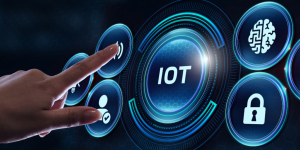In the vast landscape of the Internet of Things (IoT), hardware devices play a pivotal role in enabling connectivity, data collection, and intelligent decision-making. These devices form the foundation of the IoT ecosystem, seamlessly integrating into our environments and connecting the physical and digital worlds. Let’s explore the diverse range of IoT hardware devices that power the connected world.
Sensors and Actuators
Sensors are the eyes and ears of IoT systems, capturing data from the physical world. They detect and measure various parameters such as temperature, humidity, light, motion, pressure, and more. With their ability to gather real-time data, sensors provide valuable insights into our surroundings and trigger actions based on predefined conditions. Actuators, on the other hand, are devices responsible for carrying out physical actions based on the instructions received from the IoT system. They can activate switches, open/close valves, control motors, or adjust settings, enabling automation and remote control.
Embedded Systems
Embedded systems are the core components of many IoT devices. They consist of microcontrollers or microprocessors, memory, and other necessary peripherals integrated into a single chip. Embedded systems provide the processing power, memory, and input/output interfaces needed to run IoT applications. These systems are often found in smart home devices, wearables, industrial machinery, and other IoT-enabled products
Gateways and Routers
Gateways and routers act as intermediaries between IoT devices and the cloud or central IoT platform. They enable data communication, aggregation, and protocol translation. Gateways connect multiple devices, perform data preprocessing, and transmit the relevant information to the cloud for further analysis and storage. Routers, on the other hand, facilitate network connectivity, ensuring seamless communication between devices and the internet.
Communication Modules
IoT devices rely on various communication technologies to transmit data. Communication modules enable connectivity through protocols such as Wi-Fi, Bluetooth, Zigbee, Cellular (3G/4G/5G), LoRaWAN, or NB-IoT. These modules ensure reliable and secure data transmission, allowing IoT devices to connect with each other, exchange information, and communicate with cloud platforms.
Wearable Devices
Wearable devices have gained significant popularity in recent years, offering IoT functionality in a compact form factor. Smartwatches, fitness trackers, and health monitors are examples of wearable IoT devices. Equipped with sensors, wireless connectivity, and embedded systems, wearables collect data related to fitness, health, sleep patterns, and more. They provide personalized insights, encourage healthy behaviors, and seamlessly integrate with other smart devices and applications.
Industrial IoT (IIoT) Devices
IIoT devices are specifically designed for industrial applications, revolutionizing manufacturing processes, supply chain management, and predictive maintenance. These devices include industrial sensors, programmable logic controllers (PLCs), actuators, and other specialized equipment. IIoT devices enable real-time monitoring, data analysis, and automation, optimizing efficiency, productivity, and safety in industrial environments
Edge Computing Devices
Edge computing devices bring processing power closer to the data source, reducing latency and improving real-time decision-making. These devices, such as edge servers or edge gateways, perform data analysis and execute tasks locally, minimizing the need for constant data transmission to the cloud. Edge computing is particularly useful in scenarios where low latency, privacy, and bandwidth limitations are critical factors
Conclusion
IoT hardware devices form the backbone of the connected world, enabling seamless connectivity, data collection, and intelligent automation. From sensors and actuators that capture and control the physical world to gateways, routers, and communication modules that facilitate data transmission, each device plays a crucial role in the IoT ecosystem. As technology continues to advance, IoT hardware devices will evolve, becoming more sophisticated, energy-efficient, and integrated into our daily lives, ushering in a new era of connectivity and innovation.


